Andy Grove's secret call that helped Apple buy NeXT
- Transfer
From the translator. The memoirs of a former employee of NeXT are published as a series of posts on the forum, which are combined here for convenience in one article. I apologize for some of the confusion of the story.
For reference. NeXT was founded in 1985 by Steve Jobs after leaving his post at Apple. The company introduced the first NeXT Computer in 1988 and the reduced NeXT station in 1990. Sales were relatively limited, and shipments of devices totaled approximately 50 thousand units. Nevertheless, their object-oriented operating system NeXTSTEP and its development tools had a great influence on the industry. Apple bought NeXT on December 20, 1996 for $ 429 million, so that most of the current Mac OS X is based on OPENSTEP (a specific implementation of OpenStep from NeXT). One of the world's first WebObjects web frameworks from NeXT is currently distributed with Mac OS X Server and Xcode.
What I liked most about working at NeXT is that Steve [Jobs - ca. lane.] could call anyone.
He rushed into the office, said: “Now I’ll ring up to Bill about TrueType” - and with a gesture he called for me. A minute later, Gates was right there, talking to us on the speakerphone.
- BUT BILL! You robbed Adobe and brought John to tears ! (John Warnock was Adobe's CEO).
“Steve, we didn't want to do fonts at all.” A nightmare. But Adobe did not open its fonts until they had competition.
One day, Steve said: “I invited Jonathan Saybolda here for a day. Make sure that experts who can explain technical details, for example, 4 bits of transparency in our new color printers, talk to him. Bring him to me at 4 o'clock. ” Then Saybolda seminars were the largest event in the digital publishing industry.
That day Steve ordered me to accompany Jonathan for two hours. It was interesting to see in Jobs an attentive listener who asks short questions and patiently listens to Jonathan’s cautious answers:
“Listen, Jonathan, and how are we different from Apple?”
- Oh, this is a serious question. He deserves a thoughtful answer. “Since then, I have scolded Jonathan’s answer a thousand times in my head.”
Photo by Andy Grouve from the Net Worth Times:

Jonathan said we are like Apple, but very different from Microsoft. She put on stream software development. Three people come to him with version 1.0 - it looks like product managers. When he studies the program, they scribble notes at a frantic pace, which is always a bad sign. Then he explains what things he didn’t like, they enthusiastically say: “Thank you, Jonathan!” And ask for details.
A year later, they come back with an improved version 2.0, which is still not perfect, and the process repeats. Finally, they bring version 3.0, which is already decent enough to gain recognition and market share.
On the other hand, the creator himself comes from Apple. He or she seeks from the first attempt to make something insanely great, to change the world. His task is to make Jonathan love this. Jonathan finds it difficult to point out flaws, because the author is defensive and offended. After some time, the discussions become inconvenient, so Jonathan refused to criticize.
I always wondered how Steve took that answer.
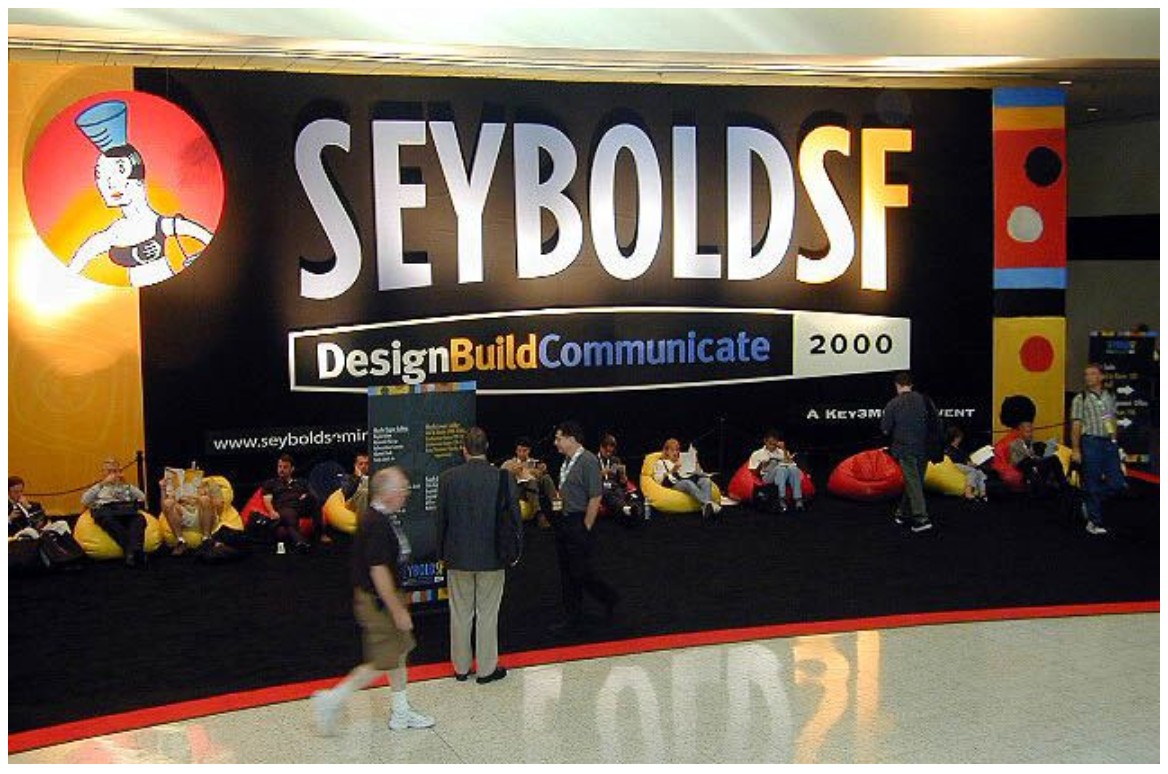
One of the visitors was George Fisher, the stellar CEO of the ambitious Motorola. Apple and NeXT computers worked on their processors. He dropped the bomb that caught me off guard: the end of life of the Motorola 68000 processor line, which we used because it became too difficult to cool.
The solution should be the next Motorola 88110 processor. I took it as a crushing blow that could bury our weak company. We'll have to develop new equipment. Who knows how much effort it takes for the OS to support it? Need to tell the developers that their life will become even more difficult. What if Motorola doesn't get enough support - and we have to change processors again?
At that time, it was widely believed that Intel processors were also in an evolutionary deadlock, and Microsoft would face the same problem. I made a list of options. Sun Sparc Chip? At the very least, they have demonstrated the possibility of a successful transition from the Motorola 68000 to the RISC. But they are our enemy.
MIPS, a respected processor developer that Silicon Graphics bought? This makes us dependent on a competitor. But I saw how the supporters of Motorola 88110 hesitate.
I can't explain why I couldn’t just relax and trust Steve, George Fisher and our engineers. Who am I to worry about? One day Steve called me at 11 o'clock in the evening to calm me down, but I couldn’t get rid of my doubts. I wanted to know what Intel was working on, but everyone just shrugged. Steve adhered to the philosophy of betting on technology at the beginning of their lives, not later.
The next day, I attended a meeting with the engineers, where Jobs theatrically raised his finger and said: "This company will survive or die, but will choose the 88110 processor." I do not know what came over me, but I said: "It will die."
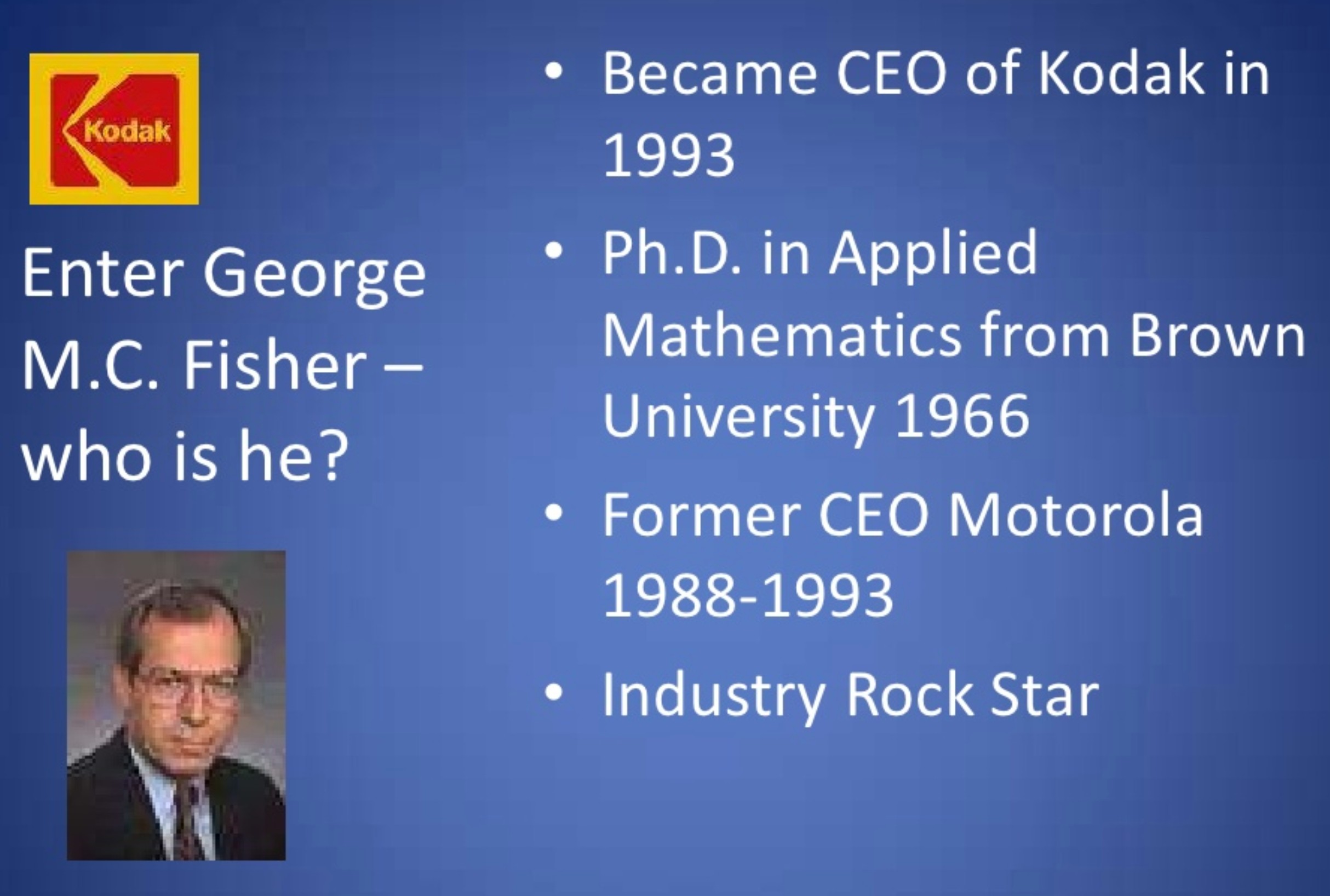
This is the last thing that sounded at the meeting. Honestly, Steve is crazy. I was angry too. The engineer escorted me to the office and said it was a pleasure to work with me.
I closed the door, picked up the phone and asked for Andy Grove. I wanted to know why they did not attend the meeting. I guessed that the reason was that we tried their Intel i860 chip on one of the graphics cards, and he was not impressed. But I should have known what Michael Dell, Bill Gates and Andy were going to do if Intel 80486 faces the same fate as Motorola 68040?
The handset was picked up by Andy's secretary. His secretaries were top managers who had been studying for two years with Andy. I explained that if Steve finds out about this call, they'll fire me. I was justified by the fact that sometimes the story shows: you need to do the right things and keep them secret from Jobs, as in the famous case when the Mac team hid Sony engineers in the Apple building so that Steve would not recognize.
I said I have no idea what Steve is doing with Andy. I only knew that he thought Intel chips were crap (a word that Steve would use). But I knew that he loved authoritative people who admire him and instruct him. Can I meet Andy and explain our situation so that he can call Jobs?
The secretary said he would ask. He later called back and made a two-hour meeting at Intel. I suddenly felt that I needed to bring an engineer with me - and I found William Parkhurst, whom I admired as one of the most influential engineers in the company. I revealed plans to my boss, Mike Slade. Then Max Henry, Donna Simonides, William and I squeezed into my Honda Accord - and drove to Intel.
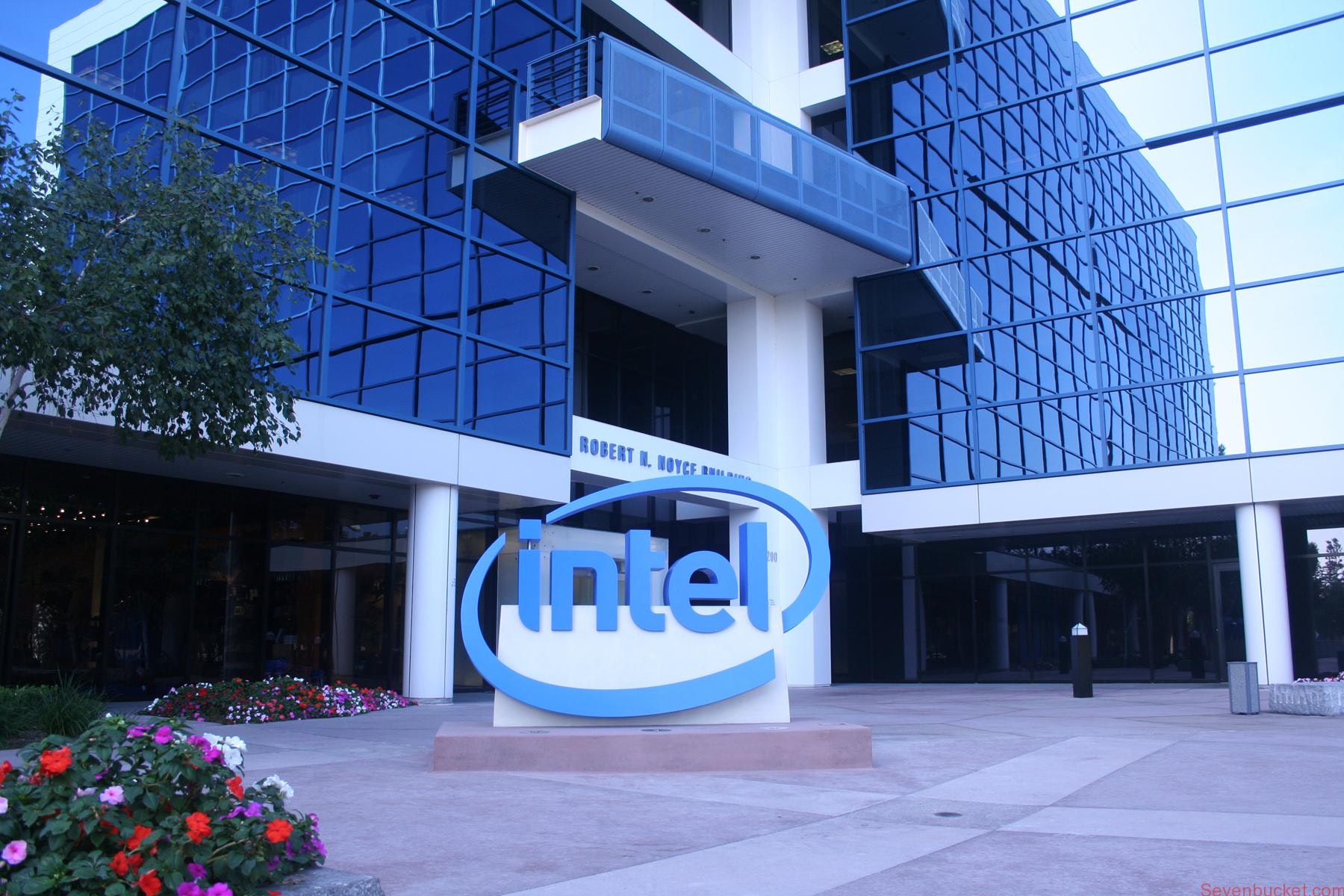
Our engineers said that Intel chips were inferior to Motorola and became the standard only because Intel was able to persuade IBM to use them. I read two Andy books and was concerned that he was a “salesman”, prone to exaggeration.
And this impression was confirmed at the meeting. Motorola could not go beyond 40 megahertz in 68040, but even this result was incredible! Lord Even more incredible was that Intel's 80486 runs at 66 megahertz! Can you imagine? I'm a physicist, I know what I'm talking about.
And at that moment I lost trust in Andy. I can not remember exactly what he said about future speeds, it seems, 400 megahertz or even more. This is too much. Frequency is 10 times more than Motorola? Everyone knows that Motorola is a more technically advanced company. You do not put Steve on the same noodles on the ears, as he did with IBM.
But still. He seemed so confident in his words. Probably just a good actor?
I thought the plan was this: Andy would call Steve and admire his achievements (this is not difficult). Bring several technicians to it, let a few great engineers test the NeXTstep port on Intel — and secure a little funding. Jobs may be hooked.
Assistant Andy said he would keep me informed of further developments. I wondered what Bill Gates and Michael Dell thought about Andy.
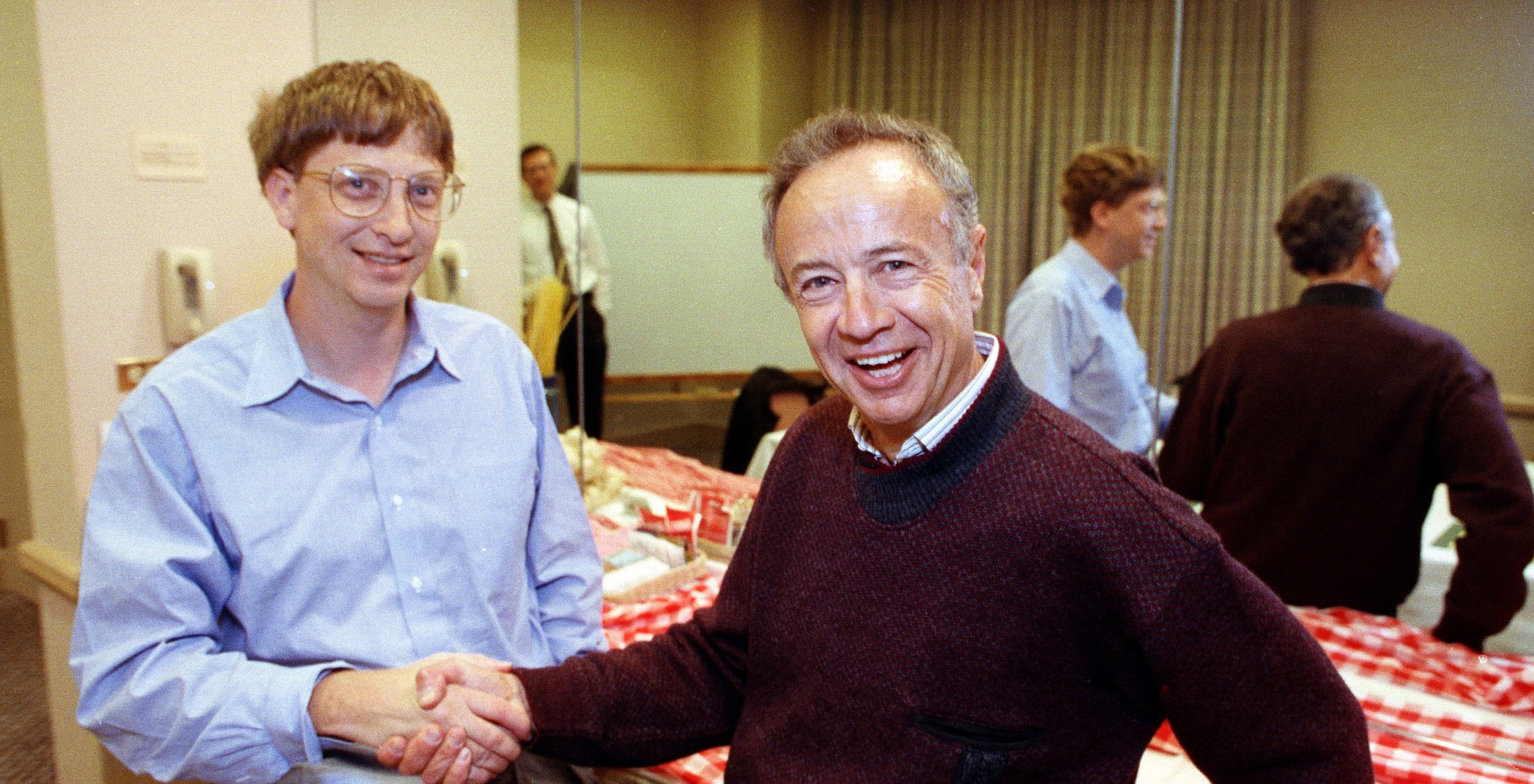
From Intel, they called and informed that Andy and many Intel employees met with Steve in a large conference room. The secretary did not know who is present on our side except Jobs. I did not know either.
After some time, Steve came to my office and asked what I thought about porting NeXTstep to Intel. Awkward situation. He found out? I asked if Intel would help us. Steve said they gave us two excellent engineers to help. In their opinion, this can be done in 6 months. We should keep this secret from the outside world. Can I act as a manager in this project?
It was not as strange as it sounds, because earlier I was already an IBM Relations Manager. Many years ago, Steve licensed NeXTstep for use on their workstations, and they had a whole team working with NeXT. We did not really believe in this project.
“Hm, that sounds good, Steve.” Chip 80486 at 66 megahertz?
- Yes. Intel's graphics primitives are crap, so this chip is unlikely to be faster than the 68040 by 33 megahertz we use now.
After six months, I carried a beige system block with an Intel processor wrapped in cloth into our secret windowless room. He was twice as fast as our sexy black cars.

Steve and William planned to sell NeXTstep as software in CompUSA and other retail stores. I did not expect this. I was counting on creating cool black computers with Intel processors, but the plan for creating a Dual-88110 workstation remained unchanged.
It was assumed that the future of processors RISC. All workstation manufacturers, such as Sun, HP, Silicon Graphics and IBM, have taken this path. I think none of them believed that Andy could increase the speed of his processors, as he said.
I understood. Andy also seemed a little slippery to me, while George Fisher was a real professional, whom The New York Times called the “gold executive in a 12-carat company.”
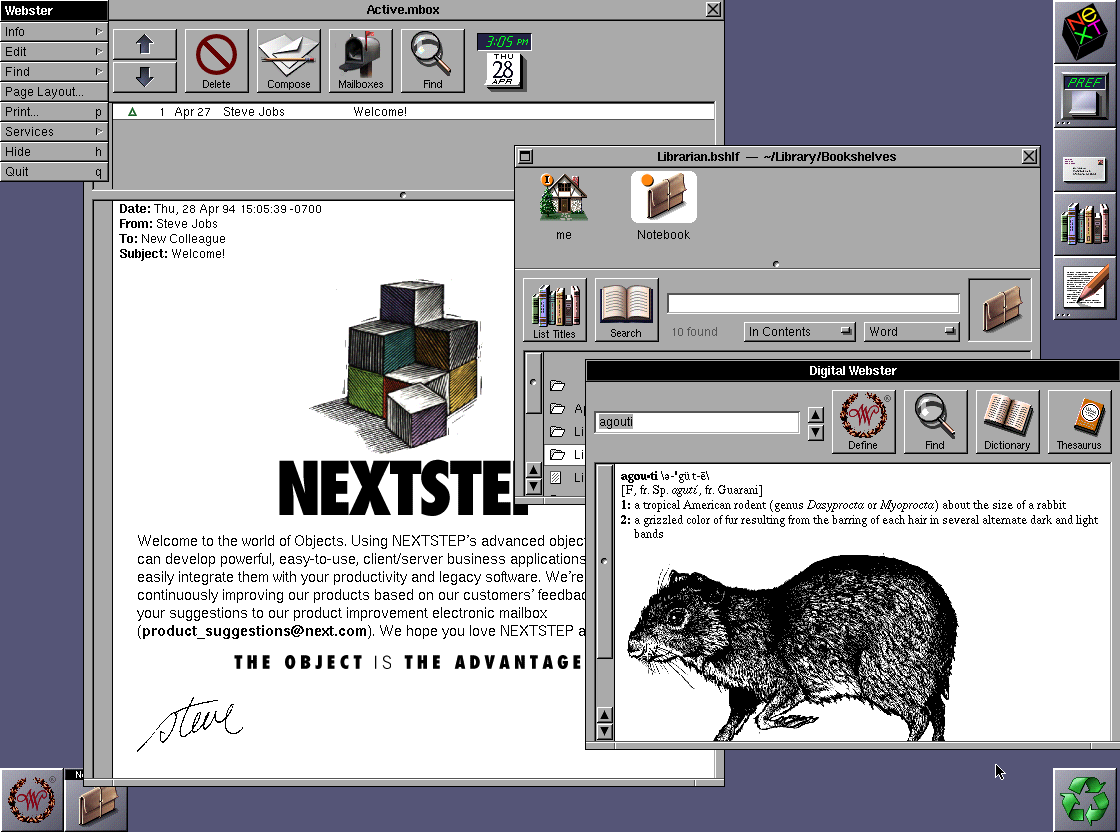
A few months later they called from General Magic. They were so convincing that I accepted their job offer.
Sales of NeXTstep as software did not go very well, and NeXT stopped producing computers before the release of a workstation based on 88110. As far as I knew, only Data General made a computer based on 88110. Apple abandoned it, uniting with IBM and Motorola PowerPC processor development.
NeXT faded into the background, but it was said that Steve and Andy got along. Andy taught lessons for Steve and his team. He taught him management techniques that would later become so famous.
George Fisher made the fateful decision to take over as Kodak CEO. The reputation of Motorola, Kodak and George himself will never be the same.
And then there were news that will change the world: Apple bought NeXT, and Steve became the CEO of Apple.
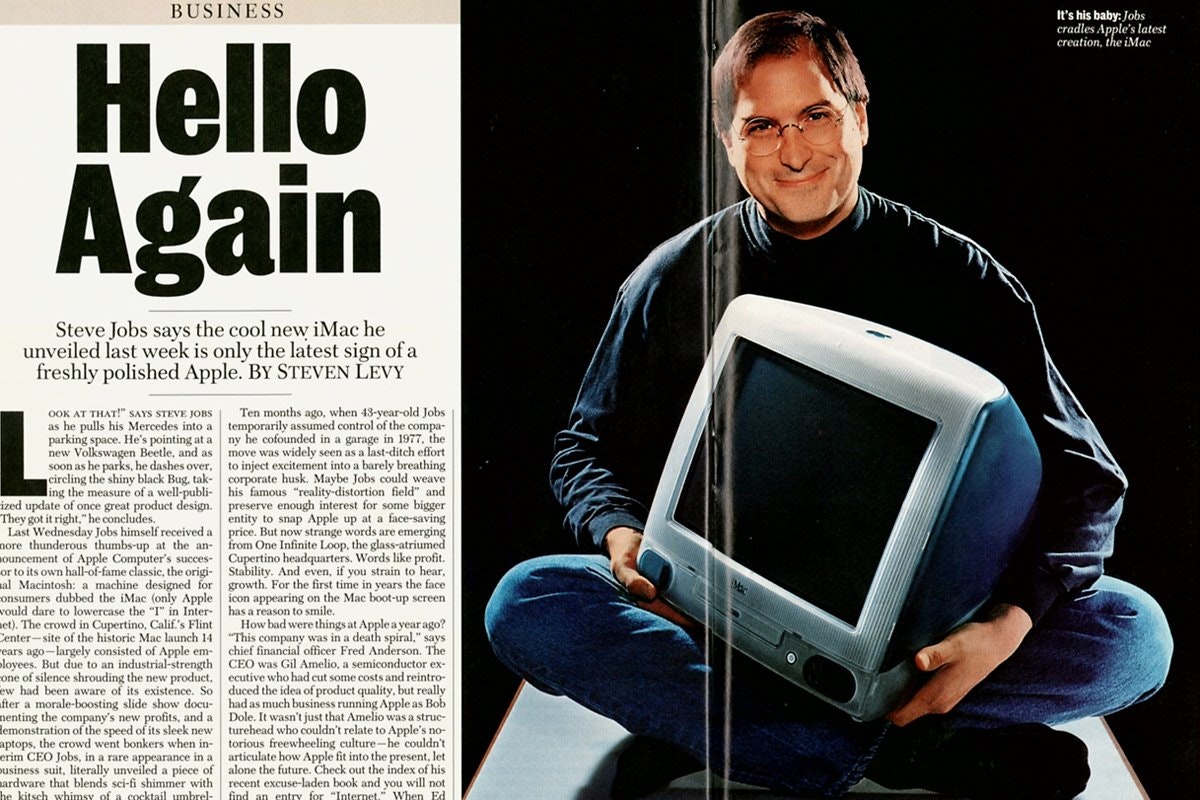
The decision to buy NeXT was made by Gil Amelio - Apple’s CEO at the time and former CEO of National Semiconductor. Later he wrote a book about how he saved Apple, and even agreed to speak at my bookstore in San Jose.
In the end, he answered only one question. He was called by John Markoff, a well-known tech journalist from the New York Times: He asked: “Gil, why did you buy NeXT, not Be?”
BeOS, like NeXTstep, was a very respected system, and the company was run by Apple top manager. Steve told Walter Isaacson that Gasse was “one of the few people I would call really disgusting. He stabbed me in the back with a knife. ”
“This is how, over the years, I remember Gil's answer:“ An excellent question, we argued a lot on this matter. Many at Apple were afraid of Steve, and Jean-Louis had many supporters. BeOS is a very respected system. In the end, the case was decisive support for Intel, already existing in NeXT, it was important for us. "
I remember thinking, " My God , Steve, you are my debtor ."
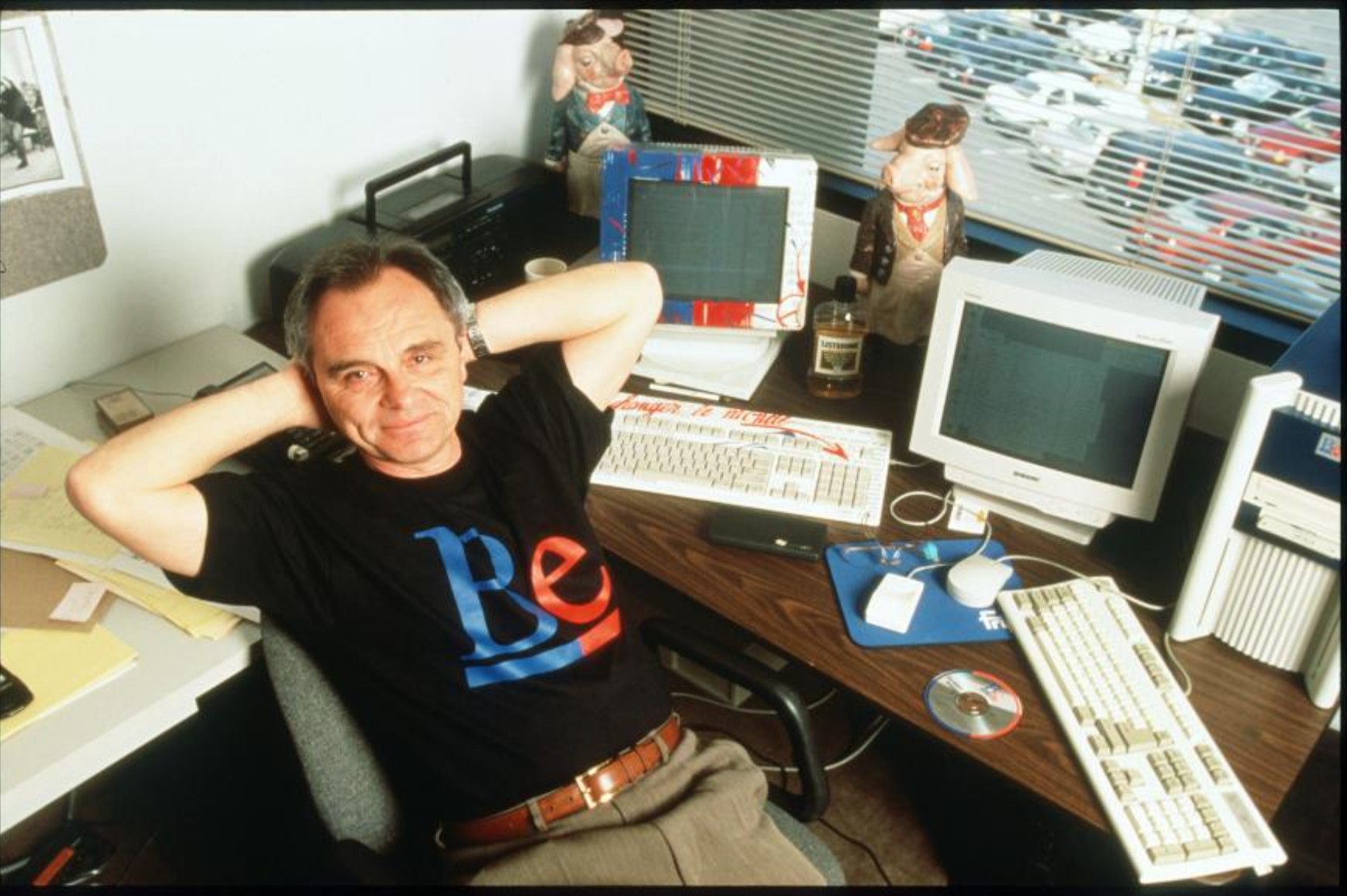
It turns out that I was not the only one to make secret calls, and not only Andy called. For example, our product manager, John Landver, guessed to call Ellen Hancock, Apple's technical director.
From the article by John Markoff :
It turned out that Andy underestimated the capabilities of his processors when he claimed that their frequency would reach 400 megahertz, ten times more than that of the Motorola 68040. The clock frequency of modern Intel processors exceeds 4200 megahertz.
10 years after the industry decided that Intel processors were approaching its decline, Apple began to use them.
Gil Amelio:

The Harvard Business Review published an article entitled “The Curse of the Star CEO,” in which she tried to explain the failure of George Fisher and Kodak.
I am always surprised. Is this really an article about CEOs? Were there any techies who we don’t know about, who found a way to overclock the processors without overheating? This is what I liked about Steve Jobs: he found out who is the best on the planet in any matter, and then did the impossible to hire him.
I know one of them. At the dawn of Apple, Steve spent the whole day persuading Bill Atkinson, a graduate student in neurology. As Steve told me, a Mac release without him was dubious. I have seen Bill solve difficult technical problems that someone else would hardly have solved.
I wonder if Andy had such a man, but George definitely didn’t have him.
Steve Jobs and Bill Atkinson:

For reference. NeXT was founded in 1985 by Steve Jobs after leaving his post at Apple. The company introduced the first NeXT Computer in 1988 and the reduced NeXT station in 1990. Sales were relatively limited, and shipments of devices totaled approximately 50 thousand units. Nevertheless, their object-oriented operating system NeXTSTEP and its development tools had a great influence on the industry. Apple bought NeXT on December 20, 1996 for $ 429 million, so that most of the current Mac OS X is based on OPENSTEP (a specific implementation of OpenStep from NeXT). One of the world's first WebObjects web frameworks from NeXT is currently distributed with Mac OS X Server and Xcode.
What I liked most about working at NeXT is that Steve [Jobs - ca. lane.] could call anyone.
He rushed into the office, said: “Now I’ll ring up to Bill about TrueType” - and with a gesture he called for me. A minute later, Gates was right there, talking to us on the speakerphone.
- BUT BILL! You robbed Adobe and brought John to tears ! (John Warnock was Adobe's CEO).
“Steve, we didn't want to do fonts at all.” A nightmare. But Adobe did not open its fonts until they had competition.
One day, Steve said: “I invited Jonathan Saybolda here for a day. Make sure that experts who can explain technical details, for example, 4 bits of transparency in our new color printers, talk to him. Bring him to me at 4 o'clock. ” Then Saybolda seminars were the largest event in the digital publishing industry.
That day Steve ordered me to accompany Jonathan for two hours. It was interesting to see in Jobs an attentive listener who asks short questions and patiently listens to Jonathan’s cautious answers:
“Listen, Jonathan, and how are we different from Apple?”
- Oh, this is a serious question. He deserves a thoughtful answer. “Since then, I have scolded Jonathan’s answer a thousand times in my head.”
Photo by Andy Grouve from the Net Worth Times:

Jonathan said we are like Apple, but very different from Microsoft. She put on stream software development. Three people come to him with version 1.0 - it looks like product managers. When he studies the program, they scribble notes at a frantic pace, which is always a bad sign. Then he explains what things he didn’t like, they enthusiastically say: “Thank you, Jonathan!” And ask for details.
A year later, they come back with an improved version 2.0, which is still not perfect, and the process repeats. Finally, they bring version 3.0, which is already decent enough to gain recognition and market share.
On the other hand, the creator himself comes from Apple. He or she seeks from the first attempt to make something insanely great, to change the world. His task is to make Jonathan love this. Jonathan finds it difficult to point out flaws, because the author is defensive and offended. After some time, the discussions become inconvenient, so Jonathan refused to criticize.
I always wondered how Steve took that answer.

One of the visitors was George Fisher, the stellar CEO of the ambitious Motorola. Apple and NeXT computers worked on their processors. He dropped the bomb that caught me off guard: the end of life of the Motorola 68000 processor line, which we used because it became too difficult to cool.
The solution should be the next Motorola 88110 processor. I took it as a crushing blow that could bury our weak company. We'll have to develop new equipment. Who knows how much effort it takes for the OS to support it? Need to tell the developers that their life will become even more difficult. What if Motorola doesn't get enough support - and we have to change processors again?
At that time, it was widely believed that Intel processors were also in an evolutionary deadlock, and Microsoft would face the same problem. I made a list of options. Sun Sparc Chip? At the very least, they have demonstrated the possibility of a successful transition from the Motorola 68000 to the RISC. But they are our enemy.
MIPS, a respected processor developer that Silicon Graphics bought? This makes us dependent on a competitor. But I saw how the supporters of Motorola 88110 hesitate.
I can't explain why I couldn’t just relax and trust Steve, George Fisher and our engineers. Who am I to worry about? One day Steve called me at 11 o'clock in the evening to calm me down, but I couldn’t get rid of my doubts. I wanted to know what Intel was working on, but everyone just shrugged. Steve adhered to the philosophy of betting on technology at the beginning of their lives, not later.
The next day, I attended a meeting with the engineers, where Jobs theatrically raised his finger and said: "This company will survive or die, but will choose the 88110 processor." I do not know what came over me, but I said: "It will die."

This is the last thing that sounded at the meeting. Honestly, Steve is crazy. I was angry too. The engineer escorted me to the office and said it was a pleasure to work with me.
I closed the door, picked up the phone and asked for Andy Grove. I wanted to know why they did not attend the meeting. I guessed that the reason was that we tried their Intel i860 chip on one of the graphics cards, and he was not impressed. But I should have known what Michael Dell, Bill Gates and Andy were going to do if Intel 80486 faces the same fate as Motorola 68040?
The handset was picked up by Andy's secretary. His secretaries were top managers who had been studying for two years with Andy. I explained that if Steve finds out about this call, they'll fire me. I was justified by the fact that sometimes the story shows: you need to do the right things and keep them secret from Jobs, as in the famous case when the Mac team hid Sony engineers in the Apple building so that Steve would not recognize.
I said I have no idea what Steve is doing with Andy. I only knew that he thought Intel chips were crap (a word that Steve would use). But I knew that he loved authoritative people who admire him and instruct him. Can I meet Andy and explain our situation so that he can call Jobs?
The secretary said he would ask. He later called back and made a two-hour meeting at Intel. I suddenly felt that I needed to bring an engineer with me - and I found William Parkhurst, whom I admired as one of the most influential engineers in the company. I revealed plans to my boss, Mike Slade. Then Max Henry, Donna Simonides, William and I squeezed into my Honda Accord - and drove to Intel.

Our engineers said that Intel chips were inferior to Motorola and became the standard only because Intel was able to persuade IBM to use them. I read two Andy books and was concerned that he was a “salesman”, prone to exaggeration.
And this impression was confirmed at the meeting. Motorola could not go beyond 40 megahertz in 68040, but even this result was incredible! Lord Even more incredible was that Intel's 80486 runs at 66 megahertz! Can you imagine? I'm a physicist, I know what I'm talking about.
And at that moment I lost trust in Andy. I can not remember exactly what he said about future speeds, it seems, 400 megahertz or even more. This is too much. Frequency is 10 times more than Motorola? Everyone knows that Motorola is a more technically advanced company. You do not put Steve on the same noodles on the ears, as he did with IBM.
But still. He seemed so confident in his words. Probably just a good actor?
I thought the plan was this: Andy would call Steve and admire his achievements (this is not difficult). Bring several technicians to it, let a few great engineers test the NeXTstep port on Intel — and secure a little funding. Jobs may be hooked.
Assistant Andy said he would keep me informed of further developments. I wondered what Bill Gates and Michael Dell thought about Andy.

From Intel, they called and informed that Andy and many Intel employees met with Steve in a large conference room. The secretary did not know who is present on our side except Jobs. I did not know either.
After some time, Steve came to my office and asked what I thought about porting NeXTstep to Intel. Awkward situation. He found out? I asked if Intel would help us. Steve said they gave us two excellent engineers to help. In their opinion, this can be done in 6 months. We should keep this secret from the outside world. Can I act as a manager in this project?
It was not as strange as it sounds, because earlier I was already an IBM Relations Manager. Many years ago, Steve licensed NeXTstep for use on their workstations, and they had a whole team working with NeXT. We did not really believe in this project.
“Hm, that sounds good, Steve.” Chip 80486 at 66 megahertz?
- Yes. Intel's graphics primitives are crap, so this chip is unlikely to be faster than the 68040 by 33 megahertz we use now.
After six months, I carried a beige system block with an Intel processor wrapped in cloth into our secret windowless room. He was twice as fast as our sexy black cars.

Steve and William planned to sell NeXTstep as software in CompUSA and other retail stores. I did not expect this. I was counting on creating cool black computers with Intel processors, but the plan for creating a Dual-88110 workstation remained unchanged.
It was assumed that the future of processors RISC. All workstation manufacturers, such as Sun, HP, Silicon Graphics and IBM, have taken this path. I think none of them believed that Andy could increase the speed of his processors, as he said.
I understood. Andy also seemed a little slippery to me, while George Fisher was a real professional, whom The New York Times called the “gold executive in a 12-carat company.”

A few months later they called from General Magic. They were so convincing that I accepted their job offer.
Sales of NeXTstep as software did not go very well, and NeXT stopped producing computers before the release of a workstation based on 88110. As far as I knew, only Data General made a computer based on 88110. Apple abandoned it, uniting with IBM and Motorola PowerPC processor development.
NeXT faded into the background, but it was said that Steve and Andy got along. Andy taught lessons for Steve and his team. He taught him management techniques that would later become so famous.
George Fisher made the fateful decision to take over as Kodak CEO. The reputation of Motorola, Kodak and George himself will never be the same.
And then there were news that will change the world: Apple bought NeXT, and Steve became the CEO of Apple.

The decision to buy NeXT was made by Gil Amelio - Apple’s CEO at the time and former CEO of National Semiconductor. Later he wrote a book about how he saved Apple, and even agreed to speak at my bookstore in San Jose.
In the end, he answered only one question. He was called by John Markoff, a well-known tech journalist from the New York Times: He asked: “Gil, why did you buy NeXT, not Be?”
BeOS, like NeXTstep, was a very respected system, and the company was run by Apple top manager. Steve told Walter Isaacson that Gasse was “one of the few people I would call really disgusting. He stabbed me in the back with a knife. ”
“This is how, over the years, I remember Gil's answer:“ An excellent question, we argued a lot on this matter. Many at Apple were afraid of Steve, and Jean-Louis had many supporters. BeOS is a very respected system. In the end, the case was decisive support for Intel, already existing in NeXT, it was important for us. "
I remember thinking, " My God , Steve, you are my debtor ."

It turns out that I was not the only one to make secret calls, and not only Andy called. For example, our product manager, John Landver, guessed to call Ellen Hancock, Apple's technical director.
From the article by John Markoff :
After reading in the newspapers that Apple was secretly negotiating the acquisition of a new operating system, Mr. Landver, without saying a word to Stephen P. Jobs, chairman of his company, persuaded his colleague Garrett Rice to take the phone and call Miss Hancock.
It turned out that Andy underestimated the capabilities of his processors when he claimed that their frequency would reach 400 megahertz, ten times more than that of the Motorola 68040. The clock frequency of modern Intel processors exceeds 4200 megahertz.
10 years after the industry decided that Intel processors were approaching its decline, Apple began to use them.
Gil Amelio:

The Harvard Business Review published an article entitled “The Curse of the Star CEO,” in which she tried to explain the failure of George Fisher and Kodak.
I am always surprised. Is this really an article about CEOs? Were there any techies who we don’t know about, who found a way to overclock the processors without overheating? This is what I liked about Steve Jobs: he found out who is the best on the planet in any matter, and then did the impossible to hire him.
I know one of them. At the dawn of Apple, Steve spent the whole day persuading Bill Atkinson, a graduate student in neurology. As Steve told me, a Mac release without him was dubious. I have seen Bill solve difficult technical problems that someone else would hardly have solved.
I wonder if Andy had such a man, but George definitely didn’t have him.
Steve Jobs and Bill Atkinson:

